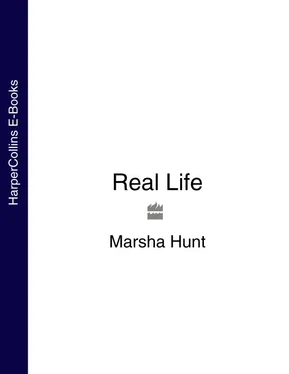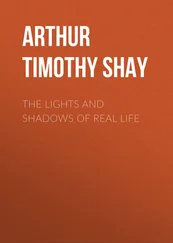What little I did hear about my ancestors was predominantly about the women, and it left me a lot of scope to elaborate on them in my imagination. They weren’t prominent, but I did have them tucked in all the corners of my mind. Subsequently, it was these who spurred my determination and whom I idolized.
All my grandmother told me of her Indian great-grandmother, simply known as Grandma Mary, was that ‘when an overseer came to mess with Mary in the kitchen, she rammed a knife in his gut’. It didn’t enter my head that this may only have been a tale. Mary’s courage was there for me to imitate and live up to. And when I heard that Fannie Graham ‘wouldn’t take no shit off nobody’ and could do anything a man could do, Fannie became a role model and was always there for reference.
So the tradition I hoped to live up to as a child was as much established by these heroic foremothers as it was by my mother, her sister and my grandmother.
I can’t see air, but I accept it’s there. In the same way, I accept that I’m influenced by the unseen parade of women who have gone before me. Sometimes I wonder if I inherited them or if they inherited me.
There are things about me
Which I can’t explain
There are longings in me
For which I make no claim
I feel a haunting
Which is infinite
For lives I can’t remember
Yet can’t forget
Soul upon soul
Stretching back in time
Stacked like a totem
Is my mother line
I am theirs
As they are mine
Within their trace
My life entwines
This mother load
Supports internally
Rooted deep in my heart
At the soul of me
I feel their pain
They laugh, now free
But in the mirror
There is only me
To be coloured in 1946 was to be economically confined and socially isolated. Segregation laws did not exist everywhere, but the fact that they were upheld in many states reminded everybody who was boss.
Something positive still managed to grow over on the ‘coloured’ side of the tracks, where I spent my early childhood. A culture developed.
These social isolation bases in America where large numbers of Melangians reside are referred to as ghettos, a word that evokes only negative imagery. They weren’t merely hellholes: they were cultural arenas. I’d like to call them reservations; as the dictionary says, ‘reservation’ can mean:
a limiting condition, or
an area of land reserved for occupation by a tribe, or
an area set aside as a secure breeding place.
In our section of the city, fear, poverty and restricted education were maintained by the promise that our patience and subservience would be rewarded by opportunities available to other Americans … maybe, eventually, somehow. While we were waiting, we made do with things as they were. Like some European working classes, in spite of poverty, we had a certain quality of life.
We had our own class system, language, religion and art forms. What we ate, how we dressed, and our manner of doing things were derived from the American culture which we imitated but could never have emulated.
America was a big beef-eating nation but on the reservation pork and chicken were favoured, because they were cheaper. No part of the pig was considered waste. This policy may have been a leftover from plantation days. Pig ears and feet, the lining of its stomach (called hog maws), the intestines (called chitlins), the hocks and the ribs were all gratefully received at the table. Chunks of pig fat called fat back were used to flavour the cooking. Most things were boiled or fried. Fried chicken was a mainstay (nobody had heard of Kentucky Fried). All kinds of beans were staples, along with rice and potatoes. Yams and sweet potatoes were favourites, although they weren’t available throughout the year. Cabbage and greens such as collards, turnips, mustard and kale were boiled and then simmered, with a piece of fat back thrown in if times were good.
In 1985 on my grandmother’s birthday, 27 March, I was home in London with my daughter Karis and spotted collard greens at my local greengrocer’s. I don’t rememer seeing this variety of green anywhere in England before. To commemorate my grandmother, I thought I’d cook some for Karis, who had never eaten them and only has a vague memory of Edna; I knew that the dreadful smell alone of the collards cooking would be nostalgic.
My grandmother would have cleaned them by soaking them first in her huge roasting pan that could hold our 30-pound Thanksgiving turkey. I plopped them into water in the kitchen sink. They were clogged with dirt and it took hours to get the damned things clean: I understood why my grandmother soaked them in such a big pot all day.
I decided to steam them rather than boil them to keep the vitamins in. I threw them in the Chinese bamboo steamers and slung a few strips of bacon in with them in place of fat back. The result was most unusual but I assumed they were cooked – they go a sort of mustard colour.
When I’d dished them out, Karis looked at them on her plate and then up at me. She didn’t see me catching her sneak that last sly glance. She can be as English as they come: the accent, the manner, the attitude and even her sensibilities are so British that it just kills me. You’d hardly know she’s mine sometimes.
She used her knife and fork to eat the collards, pressing them onto the back of her fork with her knife. I could hear some grit crunching on her braces when she tried to chew. I kept my eyes on my plate, so that I wouldn’t have to interrupt this solemn commemoration with an apology that the collards were most likely undercooked.
When my grandmother did them, they melted in the mouth. It was often a pretty testy time at our place when collards got cooked, because my mother hated the smell. They do have an unfortunate odour when they’ve been simmering for hours.
Sunday on the reservation was a day for culinary extravagance when it could be afforded. Edna made biscuits with flour, milk and lard (like scones without the sugar and currants). There might even be some bread made from cornmeal, but this was usually her Friday-night treat, served with fried mackerel which had been dipped in a mixture of flour and cornmeal before it sizzled in the big iron skillet full of smoking lard.
Hominy grits were generally reserved for breakfast, although you ate them at any time if you were hungry enough. Hominy is kernels of maize. Grits – ground hominy – were boiled in salted water to a porridge consistency and topped with butter or margarine. We also ate something called scrapple at breakfast which was scraps of meat and meal ground together and fried. The occasional dinner of hot dogs and baked beans was apologized for but indicated that we were Americans to the heart.
The socially sophisticated Melangian, more integrated into American society, wouldn’t eat like this today.
The American tradition of a free choice of worship found a zealous outlook on the reservation where store fronts, living rooms and any place big enough for a gathering of souls could serve as a place of worship. Faith kept people going and gave them hope. Evangelist, Holy Roller, Sanctified, Pentecostal, Seventh Day Adventist, Children of God, Jehovah’s Witness and many other denominations had committed followers just like larger denominations such as Baptist, Methodist, Lutheran, Episcopalian and Catholic. I missed church culture on the reservation, because we were baptized Catholic with the intention of getting the advantage of a parochial school education. But the evidence and effect of the religious element in the community reached me on many levels.
Seeing a congregation socializing outside their church after a meeting was to see reservation fashion. All manner of hats were worn by men and women alike. The ladies’ were usually adorned with a bit of netting, maybe artificial flowers or fruit like grapes or cherries, ribbons of silk or velvet. Maybe the lot. Hat, shoes, bag and outfit did not have to coordinate. Bright colours predominated.
Читать дальше











